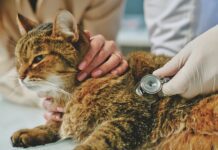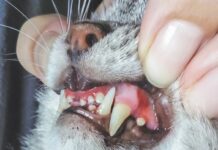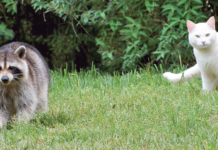Q. Our cat was diagnosed with hypertrophic cardiomyopathy at 2 years of age, which was a shock to us, given the fact that he seems perfectly healthy. Our veterinarian did not prescribe medication and told us to monitor him closely.
He is now 3 years old, and we recently had a follow-up visit and an echocardiogram and were told that his heart is now normal. This was a pleasant surprise, as we were initially told that there was no cure for his condition. Can you provide some information about this mystery?
A. Thank you for getting in touch, and I am happy to hear that your kitty’s heart is now normal. Hypertrophic cardiomyopathy (HCM) is the most common heart disease in cats, and while there are things that can be done to medically manage cats with this condition, it is true that there is no cure for HCM. Characterized by a thickening of the muscles of the ventricles in the heart, cats with HCM are at risk for the development of congestive heart failure and clot formation, which can predispose them to a blockage of blood supply to various parts of the body (most commonly the hind limbs).
Other conditions that can cause thickening of the heart muscle must be ruled out before making a diagnosis of HCM: hypertension (high blood pressure) and hyperthyroidism. Once these have been ruled out, a presumptive diagnosis of HCM is made, and it is usually expected that this disease will be progressive, or that it will minimally remain stagnant, but not revert to a situation in which the heart becomes structurally normal.
More recently, a syndrome that is being referred to as transient myocardial thickening (TMT) has been recognized in cats. With TMT, the situation is usually similar to the experience that you have had with your cat. A presumptive diagnosis of HCM is made and then follow-up echocardiograms document a normalization of heart structure.
The thickening of the heart is often accompanied by an elevation of the concentration of a protein that is only produced inside heart muscle cells (called cardiac troponin-I, C-TNl) in the blood, suggesting that heart muscle cells have died and released C-TNl into the bloodstream, where it is detected.
Finding elevated C-TNl levels in the blood of cats usually is presumed to be due to inflammation in the heart muscle, a syndrome called myocarditis. Follow-up echocardiograms in cats with TMT demonstrate a normalization of heart structure that is commonly associated with a normalization of C-TNl concentration in the blood.
While the cause of this myocarditis (and TMT) is usually not determined, proposed mechanisms include viral/protozoal infections and autoimmune disease. Irrespective of the cause, TMT is becoming more commonly recognized by clinicians, and it is important to keep this syndrome on the list of potential causes of myocardial (heart muscle) thickening in cats. The prognosis for cats with TMT is generally good, while that for cats with HCM is usually guarded, and sometimes poor, depending upon their presentation.
I hope that this is helpful, and I’m very happy to hear that your cat seems to have a case of TMT rather than HCM; but it is important that you continue to work closely with your veterinarian to monitor his cardiac status through regular wellness visits. Please send us an update when you can.
All my best,
Elizabeth



